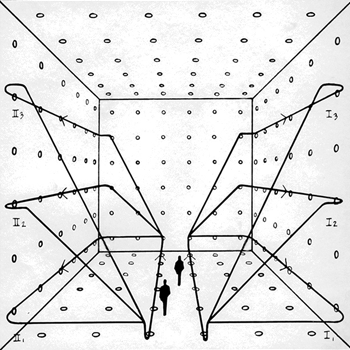Find the area bounded by the inside of the polar curve # r=1+cos 2theta # and outside the polar curve # r=1 #?
2 Answers
# 2+pi/4 #
Explanation:
Here is the graph of the two curves. The shaded area,
It is a symmetrical problems so we only need find the shaded area of the RHS of Quadrant
We could find the angle
# r=1+cos 2theta #
# r=1 #
However, intuition is faster, and it looks like angle of intersection in
# theta = pi/4 => r=1+cos 2theta =1+cos(pi/2) = 1 #
Confirming our intuition. So now we have the following:
Where the shaded area repents
We can now start to set up a double integral to calculate this area
#r# sweeps out a ray from#1# to#1+cos(2theta)#
#theta# varies for#0# to#pi/4#
So then:
# 1/4A = int_0^(pi/4) int_1^(1+cos2theta) r \ dr \ d theta #
If we evaluate the inner integral first then we get:
# int_1^(1+cos2theta) r \ dr = [1/2r^2]_1^(1+cos2theta) #
# " " = 1/2( (1+cos2theta)^2 - 1^2) #
# " " = 1/2( 1+2cos2theta+cos^2 2theta - 1) #
# " " = 1/2( 2cos2theta+cos^2 2theta) #
# " " = 1/2( 2cos2theta+1/2(cos4theta+1)) #
# " " = cos2theta+1/4cos4theta+1/4 #
And so our double integral becomes:
# 1/4A \ = int_0^(pi/4) int_1^(1+cos2theta) r \ dr \ d theta #
# " " = int_0^(pi/4) cos2theta+1/4cos4theta+1/4 \ d theta #
# " " = [1/2sin2theta+1/16sin4theta+1/4theta]_0^(pi/4) #
# " " = (1/2sin(pi/2)+1/16sinpi+1/4pi/4) - (0) #
# " " = 1/2+pi/16 #
# :. A = 2+pi/4 #
# #
METHOD 2
If you are not happy with double integrals, then we can evaluate the area using the polar area formula
Here this shaded area is given by:
# A_1 = 1/2 \ int_0^(pi/4) \ (1+cos 2theta)^2 \ d theta #
# \ \ \ \ = 1/2 \ int_0^(pi/4) \ 1+2cos 2theta+ cos^2 2theta \ d theta #
# \ \ \ \ = 1/2 \ int_0^(pi/4) \ 1+2cos 2theta+1/2(cos4theta+1) \ d theta#
# \ \ \ \ = 1/2 \ int_0^(pi/4) \ 1+2cos 2theta+1/2cos4theta+1/2 \ d theta#
# \ \ \ \ = 1/2 [3/2theta+sin2theta+1/8sin4theta]_0^(pi/4)#
# \ \ \ \ = 1/2 ((3pi)/8+1+0)#
# \ \ \ \ = (3pi)/16+1/2#
And this shaded area
is given by:
# A_2 = 1/2 \ int_0^(pi/4) \ (1)^2 \ d theta #
# \ \ \ \ = 1/2 [theta]_0^(pi/4)#
# \ \ \ \ = 1/2 (pi/4-0)#
# \ \ \ \ = pi/8#
And so the total sought area is
# 1/4 A \ = A_1 - A_2 #
# " " = (3pi)/16+1/2 - pi/8 #
# " " = (pi)/16+1/2 #
#:. A = (pi)/4+2 #
Explanation:
First a serious time saver which is a plot.
We are asked for the area hatched in black. The intersection points labelled a - d are solutions to:
The four angles listed above are those marked a - d on the plot.
Next, by my reckoning an important thing to understand - how polar areas are calculated. There is a simple formula for the area of polar function
There are various ways to get to this but the geometric (hand-wavey) derivation shows what it actually means:
In this drawing, the area is the green section, which is "swept out" between the angles
This means that, in our case, the area in the next illustration is:
Clearly that includes some of the circle that is outside what we are trying to evaluate. In addition, it is only half the story. If you explore
From that we must subtract the area of
So our modified Area is:
But we have four of these so our final answer is:
(I've assumed you know how to manage that integrand.)


